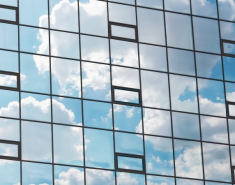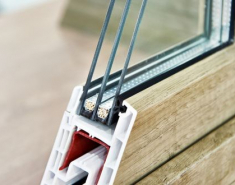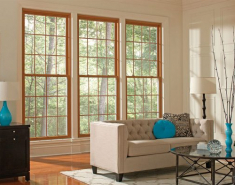Glass industry boss: Replacing old windows can bring huge energy savings
If Europe goes climate neutral, it will consume more flat glass, predicts Christian Quenett. And the benefits could be huge: simply doubling the replacement rate of windows, in line with the European Green Deal, would achieve 20% of the EU’s energy efficiency targets for 2030, he says.
Christian Quenett is a 55-year old physicist with a PhD in mechanical engineering. He has worked in the glass industry for 25 years, now at Nippon Sheet Glass (NSG Group). Since spring 2018, he is also the chairman of the board of directors of Glass Europe, the trade association for Europe’s flat glass sector.
INTERVIEW HIGHLIGHTS:
With Europe’s announced building renovation wave, the flat glass industry expects demand to grow significantly.
In Europe, doubling the replacement rate of windows alone would achieve around 20% of the EU’s energy efficiency target for 2030. And deeper CO2 cuts could be achieved still by replacing all windows with high-performance glazing.
After losing the solar PV market to China, Europe should avoid repeating the same mistakes and ensure the next generation PV modules can be manufactured here.
That means protecting European manufacturers against unfair competition as they move to decarbonise production and increase investments into clean energy sources.
First, let’s get an industry overview: What are the main areas and applications of flat glass today? Does the industry expect demand to grow in the coming years – and if so, in which areas?
There are three main areas of application: buildings, automotive, and the solar sector with solar PV modules.
In each of these, flat glass contributes to the energy transition. In buildings, we can really contribute to energy savings with better glazing. In automotive, flat glass helps reduce fuel consumption with lighter glazing. And with electric cars coming to the mass market, insulation is now becoming increasingly important to reduce power consumption for heating and cooling vehicles. Finally, in the solar sector, you need glass as base sheets and also as covering sheets for PV modules.
There are other areas, like digital glazing and digital signage, which are growing. And there are smaller segments, for example, glazing for interior architecture – bathrooms, kitchens, and furniture – which are quite interesting as well.
Solar PV and digital applications, including glass used in smartphones and tablets: Are these the two areas where you expect most of the growth to happen in the coming years?
In Europe, the biggest area of growth is in the traditional building sector. Because the solar industry in Europe is not as dynamic anymore – it’s booming in China and the US but not over here. Thin-film producer First Solar, for example, does not produce in Europe anymore.
For us in Europe, the biggest opportunity is in the building sector. We really think this is crucial to achieve the necessary CO2 emission reductions over the coming years as required by the European Green Deal.
Let me give you an example: about 37% of the CO2 emissions of buildings could be saved by 2050, by using high-performance glazing in all buildings. And, and in the medium term, just by doubling the replacement rate of windows in Europe – in line with the Green Deal – we would achieve around 20% of the EU’s 2030 energy efficiency targets. We could actually save 240 million tons of CO2 over 10 years just by doing this.
And with an increased renovation rate, we expect flat glass demand in this area to grow significantly. At the moment, the replacement rate of windows is relatively low. And that is something we have to push if we want a quick reduction in Europe’s carbon footprint from buildings.
In Europe, we can expect growth rates per year of 2.5 to 3% in normal years, based on historical data. But if Europe goes further in terms of decarbonisation and renovation of buildings then the growth could be much, much bigger.
If we achieve this doubling of window replacement rate over the next 10 years, this would actually trigger a significant increase in flat glass demand – roughly a 66% increase.
If Europe goes climate neutral, it will consume more high tech flat glass products. And we also have to bear in mind glass as a material cannot be substituted in most applications. In buildings, there are debates about moving from cement into wood. But flat glass has distinct properties – transparency, full recyclability – meaning it cannot be replaced by another material. This is why we believe flat glass is a strategic material in Europe for decarbonisation.
Source: https://bit.ly/2HSfp1S









